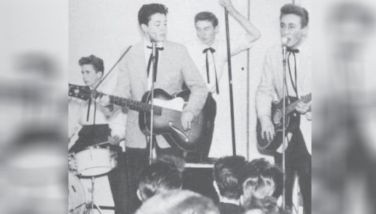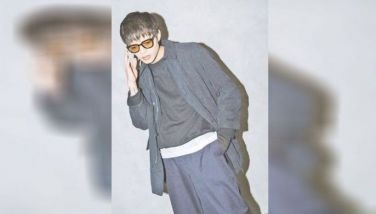Dolphy as the Pinoy version of Charlie Chaplin
There is one book that we have treasured for all of two years, having bought it in New York City, through Kensington Publishing Corp. This is The Films of Charlie Chaplin that details his life, from the days of the Little Tramp, in an innovative manner from 1915 to 1952. Throughout the book, we are struck by the many similarities of his life to that of Dolphy’s, our Pinoy comedy icon. They both had humble beginnings, started in vaudeville, were enamored with women, were known to be gracious and generous, and both had similarly experienced the rejection of a loving public. Dolphy was abandoned by his fans when he fell in love with Zsa Zsa Padilla. Charlie was forced to leave the US when accused of communist activities.
Leafing through the Chaplin book, we find him plucked from vaudeville by Keystone Studios where he made 35 movies during the year, difficult by today’s standards, but in the era of the silent picture, doing 30-minute shorts with no spoken dialogue was a cinch. Soon after, Chaplin filmed his first movie with Essanay Studios called His New Job. The year was 1915 and critics familiar with Chaplin’s derby hat, cane and exacting physical slapstick, raved about the comedian. They all agreed that the art of Charlie Chaplin was such that defied analysis.

In February, 1921, Chaplin wrote and directed his first full-length film. The Kid shows Chaplin transcending former vaudeville antics in “a picture with a smile and a tear.†The Kid tells of a single mother who leaves her baby boy in a limousine with a note asking the owner to care for her son. The Kid, played by Jackie Coogan, falls into Charlie’s care and grows up in a tough environment. By combining drama with comedy, Chaplin went out on a limb receiving incredible praise. The New York Times said, “It has something of a plot, its people are characters and the fun of it is balanced with sadness.†By the time the story reaches its finale when The Kid’s mom becomes a famous singer searching for her lost child, the audience got drenched in tears and the genius of Chaplin immortalized forever.
Two years later, Chaplin had already co-founded The United Artists Studio with Mary Pickford, Douglas Fairbanks and D.W. Griffith. Here, he directed his first serious drama in A Woman in Paris with Edna Purviance as leading lady, who played the object of Charlie’s desire in over 30 films. Chaplin had felt it was time to launch Edna’s career as a lead star and A Woman in Paris covered it all — broken hearts, broken marriages and suicide, yet it did not get her the starring status Chaplin had hoped for. The film, however, did garner for the director media praise.
By 1931 with the era of the silent film waning while talkies were quickly gaining popularity around the world, Chaplin once again took a risk. City Lights that began in 1928 was not to be annihilated by the new technology Chaplin told himself. For the first time, he composed the musical score for his film, instinctively dramatizing the mood on the screen and allowing melody to replace spoken word. Historically, City Lights is considered Chaplin’s apex of artistic accomplishment. In the story, Chaplin falls in love with a blind girl who sells flowers to survive. He learns of an operation that would restore the girl’s sight and raises the money which lands him in jail.
Amidst tumultuous times in 1936, United Artists put out Modern Times with Chaplin starring in his last silent role as Little Tramp. This film, borne out of the Great Depression, is a satirical statement on the desperate economic conditions of the times and shows Charlie struggling to make ends meet in a modernizing world.
Chaplin made his final film with United Artists in 1952, but continued to work abroad after being accused of communist loyalties and his films being refused re-entry into the US. Limelight was released internationally and was a roaring success. Its plot set in 1914 London had Chaplin playing Calvero, a has-been and drunkard who saves a young dancer from killing herself. The dancer falls in love with Calvero and wants to marry him but Calvero sets her up with a younger man whom he believes is better fit. Limelight, as the New York Herald Tribune put it, “is a kind of cinematic poem that touches the heart with its dramatic images of longing.â€
Any Filipino familiar with the history of Dolphy will easily liken him to Chaplin. Would it be a surprise to find out that this Filipino King of Comedy looked upon Chaplin as his hero?
(E-mail us your comments at [email protected] or call 0917-8991835.)
- Latest
- Trending































